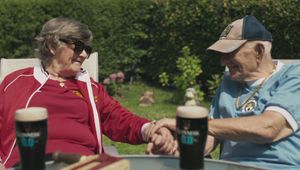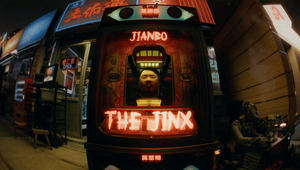
The Extreme Hand-Crafting of Dan French’s Cyberpunk CGI Music Video for Jianbo

Dan French’s video for Jianbo track ‘For The Honour’ featuring Nix Northwest is intensely DIY in its ethos. The fully CGI story takes viewers on a hyperstimulating descent into cyberpunk cityscape where identity, ancestry, and alternate futures collide. Built entirely in Dan’s spare time between commercial jobs, the project was developed frame by frame with the director, who is represented by Stink, handling every aspect himself – from modelling and rigging to texturing and compositing.
The artist and director had actually known each other for some time. Jianbo used to do work as a sound operator on all of Dan’s work. “He’d always spoken about how he was doing music and really wanted it to take off, which was a big thing for him,” says Dan. “I was always aware of it, and then slowly he stopped taking sound jobs and I watched him progress in his music career. I was like, ‘Dude, we need to actually do something.’ He put out a few music vids that were quite crazy – one where his head was in dim sum on a lazy Susan, spinning. I thought that was really cool. We’d been chatting for ages about doing something, and luckily the timing worked.”
The story, heavily influenced by gaming, explores honour and Jianbo’s conflicted experience of it, while elements of Asian identity and internal struggles are layered throughout. Between him and Dan, the idea got ambitious quickly. “What I wanted to do was becoming impossible without going to Japan or building mad sets,” says Dan. “I’d seen people do that before, but I loved the idea of doing it GTA-style, having him as a 3D model.”
They decided to start some tests. Dan 3D-scanned his face using just a phone with a specialised app on it, to see if it would work. The result was better than he expected. “So in that process of pitching the idea, I started thinking, let’s push all this crazy conceptual stuff out there and rely on the fact we can hopefully do it all in CG. That opened up a lot of doors for what the video could be versus a traditional method, which is harder to produce,” the director goes on.
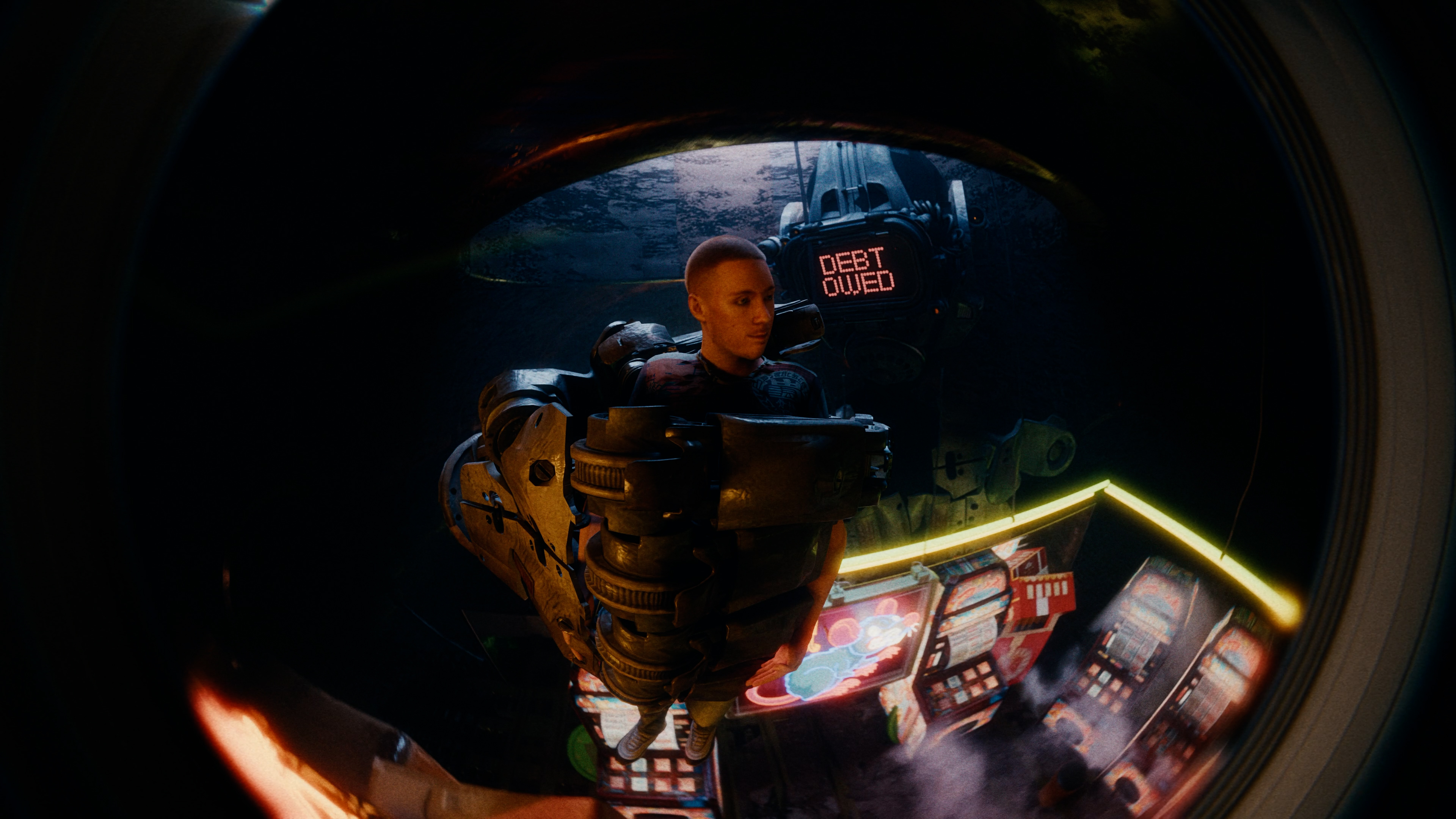
Dan had been building up to this, doing a lot more VFX and CG. He’d always done part of that, starting out as a one-man band, editing his own films and learning different kinds of post-production processes. “When I started doing proper commercial stuff that kind of fell away a little bit, but I always ended up getting my teeth into the projects anyway. I found that it followed me a little bit throughout.” he says.
He’d continued learning throughout his directing career, including moments like a Pepsi campaign he directed, for which he added a neon sign to a scene. “I started getting quite good at it and enjoying it as well. But when I took this one on, I had never really built full 3D worlds like that before. I had been adding stuff to existing shots. So it was quite crazy, but I knew the processes, it was just about expanding that in a huge way.”
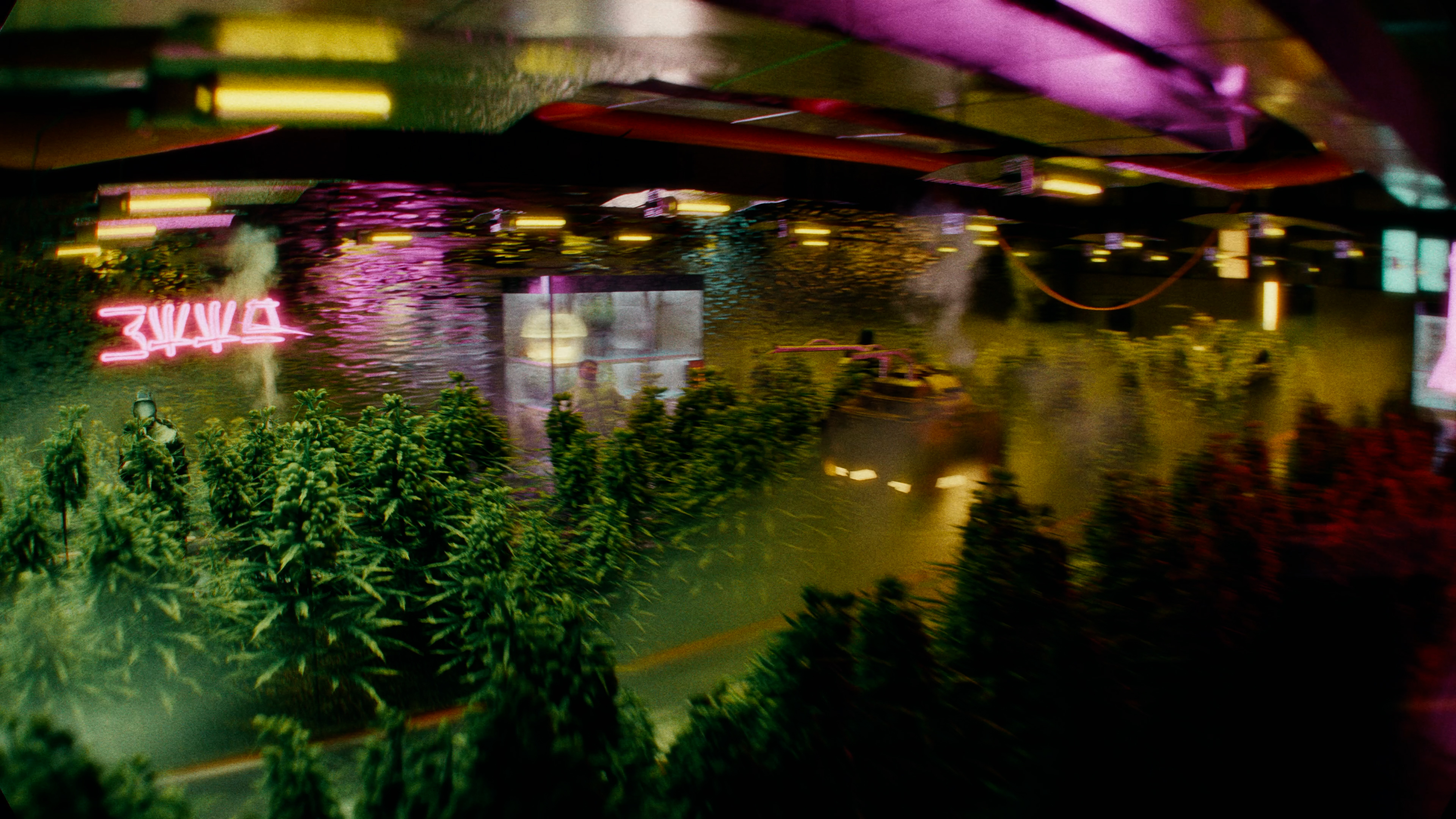
Thankfully, ‘For the Honour’ had a bigger lead time than many music videos, around six months to play with. That meant Dan could take it on alongside other work as a passion project. “That was a major decision-maker, because it was the perfect opportunity to experiment. It’s rare you get that kind of time limit where you can try new things you haven’t done before.”
At first there was a much more simple idea – one camera move that goes down through the earth. “There’s actually a bit of that which stayed in the video – just little cut-out pockets in the earth. It becomes a fleeting transition moment. That was the original concept,” says Dan. He ran a test on the CG build of that and sent it to Jianbo. “It’s one camera move and these small, contained worlds.” Easy.
He made it harder. “Then for some reason I thought it’d be really cool to fly through the city and discover the statue at the beginning. Once I’d done that, I realised the rest of the video couldn’t just be one camera move down through the earth, because it already started with this high-energy move.”
The idea developed from there. The idea of live action lingered for a while, but eventually a fully-CG video idea emerged. “Quite quickly I realised it might be easier to do something fully VFX – and that might actually be more unique, because we wanted it to stand out and have a different vibe, something not seen as much.”
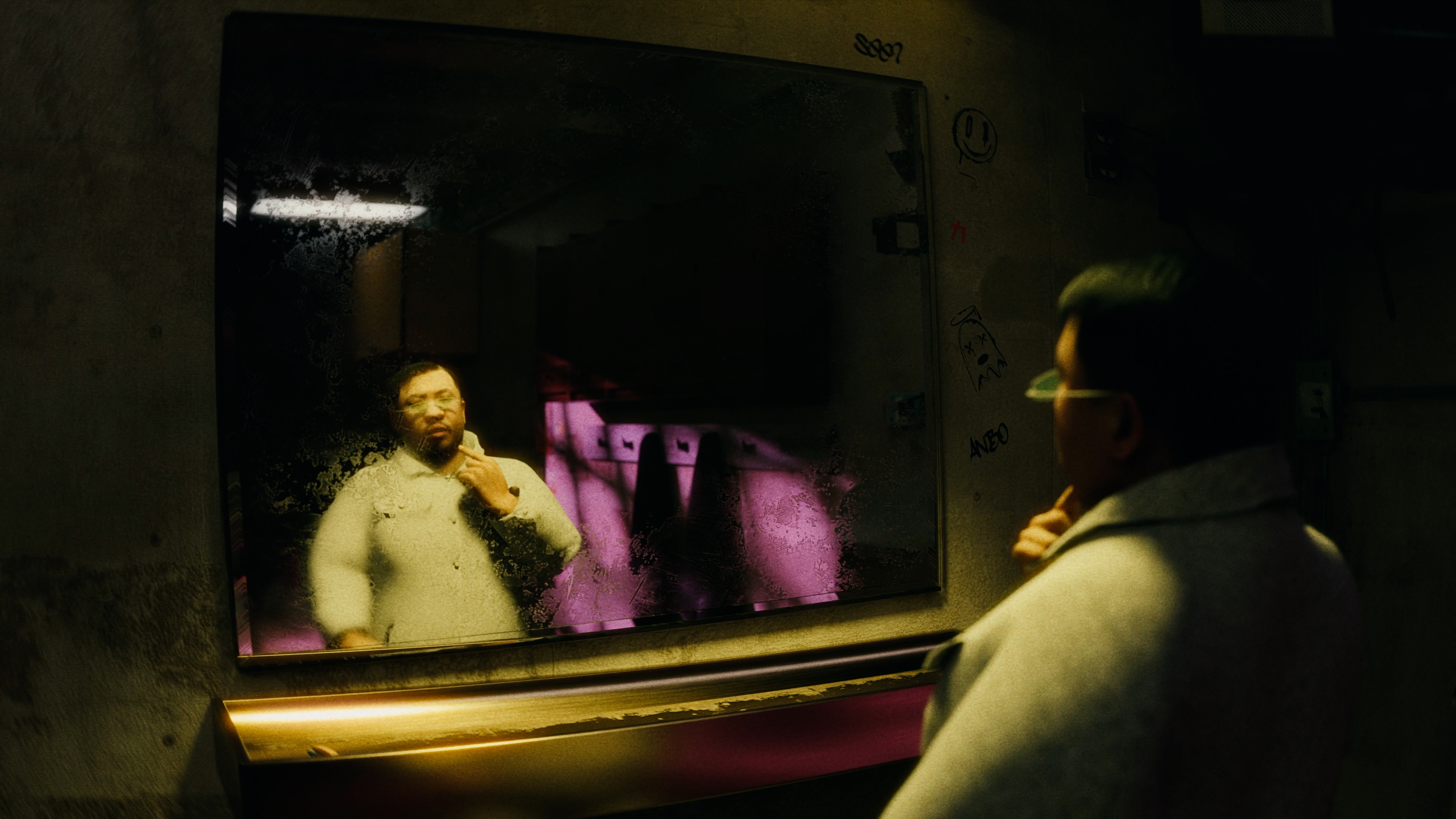
Inspired by the cinematic language of Wong Kar Wai, the urban sprawl of Tokyo, and the neon tones of cyberpunk futurism, Dan blended dystopian motifs with real cultural undercurrents in Jianbo’s life to also comment on loyalty, sacrifice, and the ripple effects of success.
The general look of the world was intriguing to Dan. “Mixing animation and CG with what you can do now – scanning faces, modelling and all that — you can get to a place where it reaches this weird CG animation world, which is quite cool. It’s funny, it’s almost like the limitations became the style, because we found ways to do stuff. I just didn’t want it to be so perfect. It was more about the art direction – I still wanted it to feel graded with a bit of grain and grit, not super clean like a video game would be, and not overly digital. Although we had that, in the grade we added lots of post-processing to give it more halation and a film effect. That gave it a bit of edge and style, which was really nice.”
As the project was advancing over months, AI was becoming more and more of a familiar aesthetic in the video world. “AI development was moving so fast,” says Dan. “I was watching this stuff come out and thought, I really don’t want people to think this is AI-generated.”
So none of it was generated in AI. And the finished film has a distinct look as a result. In fact, lacking access to motion capture studios or suits, Dan recorded iPhone footage of Jianbo dancing, then manually translated the movements into animation. “The human element of not obsessing over perfection in the animation or the mocap – allowing it to be a little rough where it needs to be and have a fun aspect – that’s what made it stand out. For me, filmmaking is all those happy accidents, whether on set or in post, experimenting with things.
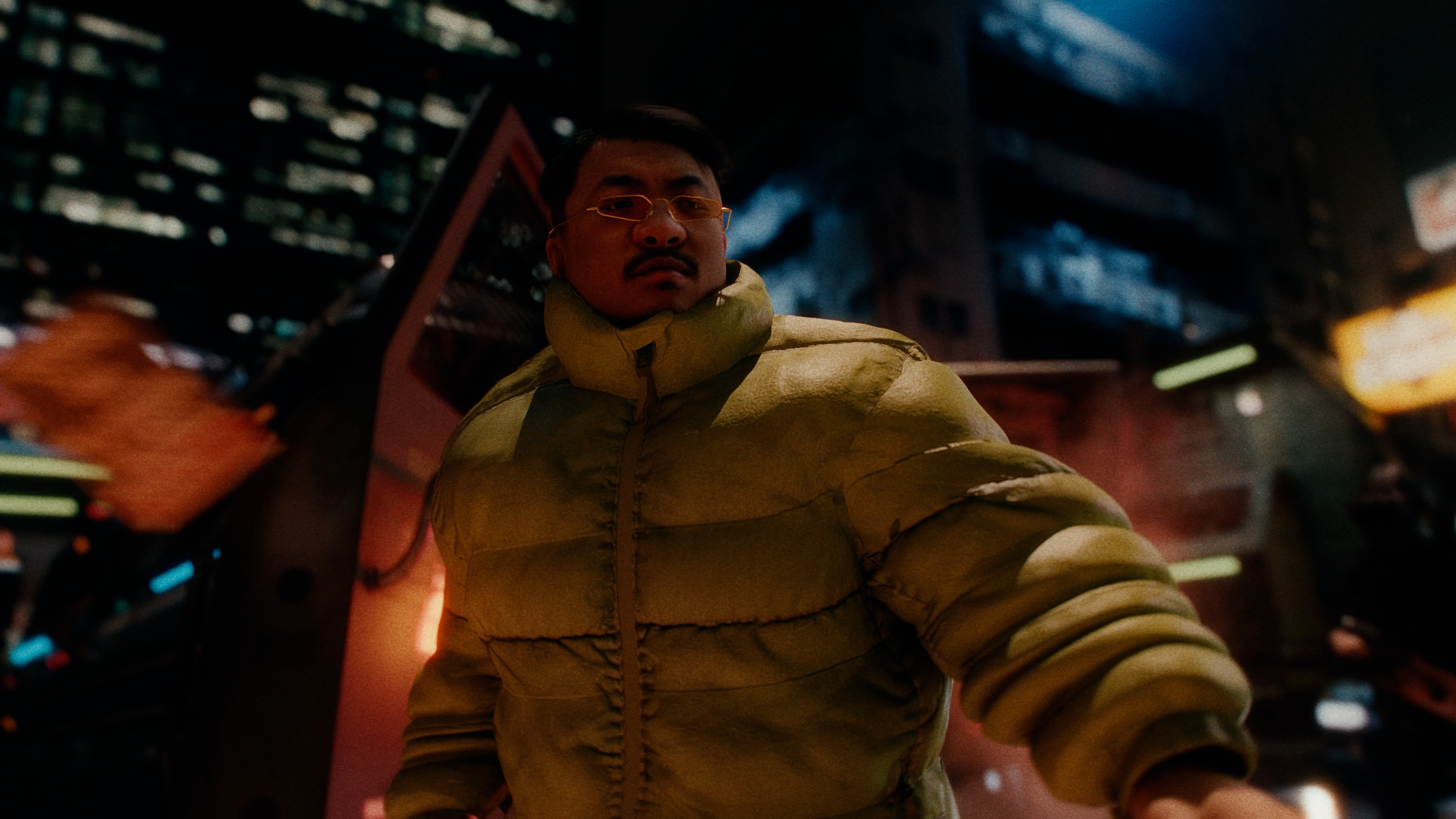
“AI is a great tool, but it still needs that human base,” he continues. “Even if I took this whole video and pumped it through AI, I think it would strip out the nice imperfections that make it what it is and instead add random things. That’s the biggest difference – AI adds stuff you didn’t plan, whereas here I designed every set.”
There are a few assets in there bought from marketplaces, but most of it is 3D modelled, handcrafted by Dan. “Everything in those scenes is there because I put it there, rather than hitting and hoping and having stuff randomly appear,” he says.
There’s a ridiculous level of detail in the film, considering that handcrafted nature. Even down to the graffiti on the walls in the prison scene, which Dan drew himself. Or in one of the scenes where he’s in the studio with robots live streaming, there’s a chat in the top left – Dan even put his own Instagram in there and wrote his own comments.
“Those little details are the fun bits. That’s what makes me love my job, versus prompting stuff in an output machine,” he says.
Putting Jianbo in the film required a lot of work. Starting with six photos of his head from different angles, the director then had to match the mesh to those angles of the face, translating him into a 3D model. He used a combination of 3D scans for reference, photos for textures, and then hand-sculpting the mesh. “Even once it was done, there was still sculpting to do,” he says. “That’s another thing that could have gone on forever, but there are levels to consider. You have to render, and there’s always a sacrifice in render time depending on how much skin detail you want. Do you push for Avatar levels, or keep it where it’s at? I think we landed on a really nice mix.”

Then there was the animation of all the models and multiple cameras. “I’d build the scene, do one camera movement, and set each block of the scene to a certain timing with the track,” says Dan. “I had a spreadsheet that broke it down: for example, 20 seconds divided by 25 frames, then I’d make the Blender project that many frames long. That gave me the framework.”
There were infinite details for Dan to get right that we don’t have time to do into. For example: “Honestly, doing the lip sync was so complicated,” he laughs.
Everything had to be rendered out. Each sequence had a set end point — for example, the drone flying in, going through the window, the stuff happening inside, then pulling back out of the window. That was the cut point into the next scene. The projects would get too big if it was one continuous file. “So I’d take that scene, keep the camera animation continuing, then build the next bit. It was very modular all the way through,” he says. “I started with very simple geometry – not too crazy with buildings – just to map out the timing. Once I had that framework, I built out the scenes in detail, adding lighting and everything.”
As a one-man band this was painstaking. “Most of the time I was in a hotel room on my laptop, remoting into my PC at home which had the big graphics card. I’d do a lot of the camera work and scene blocking on my Mac, then remote into the PC to handle the shaders, texturing and lighting. I’d send renders back to myself over wifi and watch them in the hotel. It was so long.”
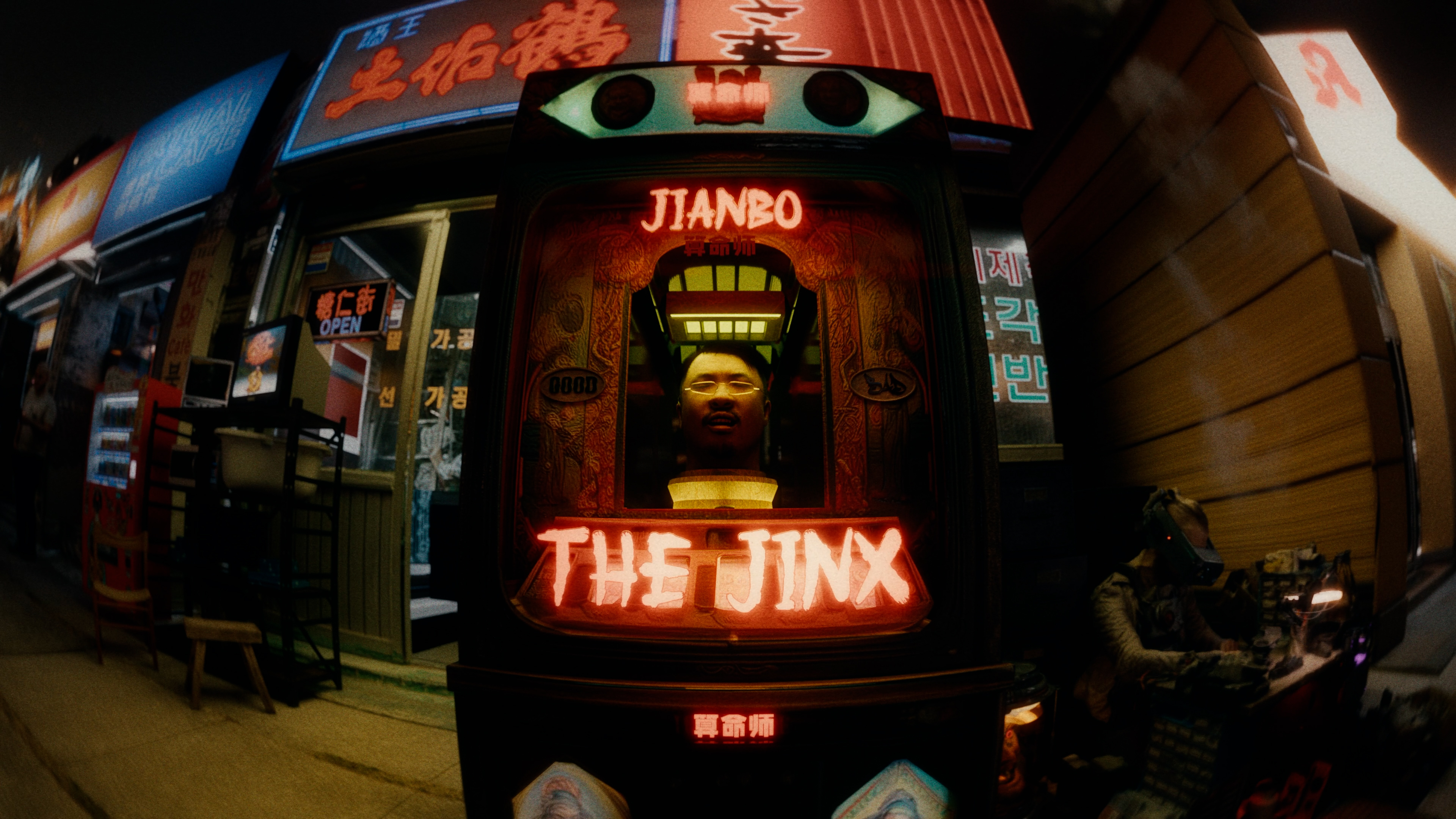
When he was back home from jobs, he’d take the time in between to “really hammer down”. But he loved it. “It was respite, in a way. Work can sometimes be tough – hard decisions, back and forth, moments where you feel stifled. But this was completely open, like an escape world where I could mess around and let the creative juice flow. Looking back, I’m really happy I made it and put that effort in. It was a really unique project – not like anything I’ve done before,” he says. “It was a lot of work, but it was really fun. It’s a bit like playing ‘The Sims’ – you get addicted to building these worlds. I’ve always loved painting, and it felt similar, like painting a scene.”
The learning process has been crucial to Dan’s development as a director too. Off the back of this, he was able to handle the VFX for the Reebok and MANORS film he made this year. “There’s some level of control that’s nice there, especially when you’re trying to make a job work on a challenging budget or when you want a bit more creative freedom,” he says. “It’s also great to collaborate with other VFX artists. I did that recently on another project where we tag-teamed a job. I was mocking it up in Blender, sending it back and forth, fiddling in a very manual process. Eventually we decided it made sense for me to carry on with it because I had such a specific idea for that sequence. That communication level is great. Being able to speak specifically with the VFX people about shaders or technical details is super helpful. It’s useful to be able to speak their language.”
Watching ‘For the Honour’ back knowing how singular Dan’s effort was, it’s something he’s rightfully proud of. “It’s mad to see it now and realise how much work it was. When I was doing it, it was so intermittent, built stone by stone, that I never took a moment to look back at the final big pyramid,” he says. “It only really hit me when I released it and people messaged asking how on earth I made it on my own. That’s when I realised, yeah, it was a fair bit of work. But it was also super fun.”









